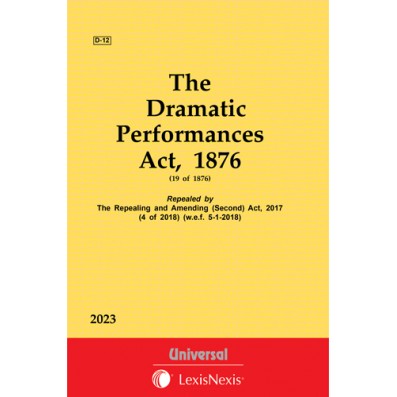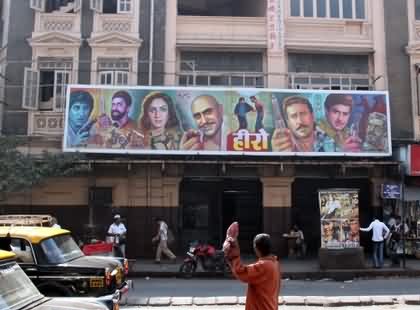
Independence Day in India lacks its essence without enchanting songs like “Mere Desh ki Dharti sona uagle” from the movie Upkar. This Independence Day, Finology brings you the form of Indian cinema beyond its entertainment value. This blog aims to make you understand how Indian Cinema has been a powerful storyteller of the nation's history, struggles, and the spirit of unity that defines India.
From the inception of cinema in India, it served as a medium to depict the country's fight for independence, propagating messages of freedom, resilience, and a shared national identity. Let’s dive into the world of Rich Indian Cinema.
Indian Cinema in Pre-Independence Era
-
In the early 20th century, Indian cinema pioneers like Dadasaheb Phalke used cinematic artistry to convey their discontent with colonial rule.
-
The silent masterpiece Raja Harishchandra(1913), ingeniously employed metaphor to critique the British Raj. The story of an honest king betrayed by a cunning sage resonated among the masses, mirroring the exploitation India faced under colonialism.
-
Raja Harishchandra was not merely a cinematic feat; it was a statement of dissent, crafted by the legend himself Dadasaheb Phalke.
-
During this era, films ingeniously masked their anti-colonial messages through symbolism. A prime example of this can be the movie Bhakt Vidur(1921) which will be discussed later deeply in this blog.
-
The hidden, symbolic messages faced censorship, and the symbolic voices resonated with the audiences, sparking a sense of rebellion against colonial rule.
Role of Indian Cinema in India's freedom struggle
Let’s delve deeper into the timeline of Indian cinema's profound impact on India's freedom struggle.
 Source: Wikipedia
Source: Wikipedia
1872: Sadhabar Ekadashi
The first spark of cinematic dissent emerged with Girish Chandra Ghosh's Sadhabar Ekadashi. This pioneering film illustrated the brutal treatment of Indians and the imposition of indigo farming. The film initiated a cinematic discourse against colonial oppression.
 Source: Lexis Nexis
Source: Lexis Nexis
1876: Enactment of The Dramatic Performance Act,1876
The colonial authorities sensed the potential of Indian cinema as a tool for rebellion. The enactment of the Dramatic Performance Act aimed to suppress works that criticized British rule.
However, this attempt by the Britishers did not deter the freedom fighters, and the idea of "theatres on wheels" was born, carrying an ocean of political, religious, and social ideologies to rural India. This concept was the brainchild of Bal Gangadhar Tilak.
 Source: Mumbai city & travel guide
Source: Mumbai city & travel guide
1920-1930: Transformation of Indian Cinema
The 1920s witnessed a significant transformation in Indian cinema. The medium evolved from silent films to talkies, amplifying its reach and influence. This transition facilitated more direct storytelling and connection with the masses.
/content-assets/ed685b8964514a7e93d3e35fd654231a.jpeg) Source: Dharmik Gyan
Source: Dharmik Gyan
1921: Bhakti Vidhur
Kohinoor Films released Bhakti Vidhur, a film that portrayed Gandhian ideals and his depiction as a revered figure. It showcased the "topi" and the charkha as symbols of defiance, leading to its ban by British-Indian censors. This movie marked a cinematic nod to the growing nationalist sentiment and Gandhi's role as a unifying force.
 Source: Bollywood Hungama
Source: Bollywood Hungama
1932: Toofan Mail
The impact of cinema on the freedom movement further intensified with Toofan Mail (1932), a film that symbolized resistance against colonial oppression. Its themes resonated with the audience, fostering a spirit of defiance.
/content-assets/7903a0f672b244e1b440003af3167fdc.png)
1934: Kaala Gulaab
In 1934, Kaala Gulaab took a stand against liquor consumption, aligning with Mahatma Gandhi's anti-liquor policy. The film merged social messages with cinematic entertainment, showcasing the power of cinema as a platform for change.
 Source: Lyrics Tashan
Source: Lyrics Tashan
1939: Brandy Ki Bottle and Tiyagi Bhoomi
Cinema-Era introduced Brandy Ki Bottle (1939), a film that directly addressed Gandhi's stance against alcohol consumption. The same year, Tamil pioneer K. Subramanyam directed Tiyagi Bhoomi, the first film banned by the British for carrying a message of freedom struggle against their tyranny. The movie was based on the life of Shambhu Shastri, known as the "Gandhi of Madras Presidency."
/content-assets/9582de88e30b407ca903735496ac453a.jpeg) Source: Cinestaan
Source: Cinestaan
1943: Kismet
Starring Ashok Kumar, who brought the character of Shekhar to life and became a sensation during the catastrophic years of World War II. With the freedom struggle intensifying and global tensions rising, censorship rules were briefly liberalized. The film's impact was hard-hitting, symbolizing the people's determination to break free from the shackles of colonialism.
-
It is important to note that the pioneers of Indian cinema were not just artists; they were freedom fighters in their own right. Dwarkadas Naraindas Sampat's Bhakt Vidur (1921) not only entertained but also disseminated messages of unity and resistance. The boldness of J.B.H. Wadia's films, like Toofan Mail (1932), resonated with the sentiment of defiance against colonial oppression.
-
Sikandar (1941), directed by Sohrab Modi, emerged as a powerful voice for India's freedom. The song "Jeete Desh Humara, Bharat Hai Ghar Baar Humara" resonated as an anthem of unity and resistance against colonial rulers.
-
V. Shantaram's Amar Jyoti (1936) and Shejari (1941) used cinema to address socio-economic issues and communal harmony.
 Source: First post
Source: First post
Quit India Movement: Igniting the Flames of Freedom
With the Quit India Movement gaining momentum in 1942, cinema became a dynamic tool to amplify the call for freedom as Britishers liberalised the censorship rules. The changing socio-political climate led to a staunch stance on freedom, further fueling the movement's fire.
Read more about our freedom struggle in our latest blog on Quit India Movement.
Indian Cinema in Post Independence Era
As India's struggle for independence intensified, Indian cinema became a powerful ally in depicting stories of national heroes.
Shaheed (1965) brought Bhagat Singh's bravery to life, narrating his fearless defiance of British oppression. The dialogue "Sarfaroshi ki tamanna ab hamare dil mein hai" became a war cry for generations, reinforcing the spirit of unity in the fight against tyranny.
Mother India(1957), where story of Radha's trials symbolized India's journey post-independence. With dialogues like "Jao, pehle us aadmi ka sign le ke aao, jisne mere haath pe yeh likh diya tha". And punchlines like "Hindustan Humara" made Mother India an icon of the anthem of unity in the face of adversity.
New Age of Indian Cinema: Revisiting Independence
Lagaan (2001), set in British India, captures villagers uniting against unjust taxes, symbolizing the collective struggle for freedom. The film struck a balance between hard-hitting message and the sport we Indians love the most, “Cricket”. Well-crafted plots and dialogues like "Aaj hamare paas gaon, gai aur gaalow hai, kya hai tumhare paas?" appealed to the masses and highlighted the disparity between the colonizers and the colonized.
Mangal Pandey: The Rising (2005) is another masterpiece featuring Aamir Khan, which delves into the story of the soldier who sparked the First War of Independence in 1857. The film's dialogue, "Woh Hindu ki na, na Musalmaan ki, insaan ki awaz uthayi thi" ignited the essence of unity among the citizens of contemporary India.
Rang De Basanti (2006) intertwines historical episodes with contemporary youth, reflecting on the relevance of the nation's past in shaping its present. The dialogue "Koi bhi desh perfect nahin hota, usse behtar banana padta hai '' set fire in the hearts of every youngster, emphasising their pivotal role in nation-building, echoing the spirit of self-governance and progress.
Tell us in the comment section below which Indian Film resonated with you the most and why?
Conclusion
Just like our Bollywood movie, it's time to roll the credits and conclude that Indian cinema has proven to be more than just a source of entertainment; it has been a mirror reflecting the trials, tribulations, and triumphs of India's journey to freedom. From the pre-independence era to the post-independence era, Indian cinema has stood as a powerful storyteller, capturing the essence of the freedom struggle, the sacrifices of national heroes, and the spirit of unity that binds the diverse fabric of India. Through its innovative storytelling techniques, impactful dialogues, and resonant songs, Indian cinema has contributed significantly to shaping the nation's identity and fostering a sense of patriotism among its citizens.
As we celebrate Independence Day, let's remember and honor the pioneers of Indian cinema who played an instrumental role in weaving the threads of the freedom movement into the cinematic masterpiece. Their courage to challenge colonial censorship and convey powerful messages of resistance has left a lasting mark on the history of Indian cinema.
FAQs (Frequently Asked Questions)
1. Which film is regarded as the first silent movie in India?
The first silent film in India is "Raja Harishchandra," released in 1913 and directed by Dadasaheb Phalke.
2. Who was called the "Gandhi of Madras Presidency"?
Shambhu Shastri, also known as the "Gandhi of Madras Presidency," was a prominent figure in the Indian freedom struggle.
3. Which movie is known as the first banned film that directly addressed the oppression of Britishers?
"Tiyagi Bhoomi," directed by Tamil pioneer and legend K. Subramanyam, is the first banned film that conveyed the freedom struggle against British tyranny.
4. How did Indian cinema support the Quit India Movement?
Indian cinema supported the Quit India Movement by amplifying the call for freedom through films that resonated with the changing socio-political climate. The liberalization of censorship rules by the British further fueled the use of cinema as a tool for the movement.
5. What role did modern Indian films play in revisiting the theme of independence?
Modern Indian films like "Lagaan," "Mangal Pandey: The Rising," and "Rang De Basanti" revisited the theme of independence by intertwining historical events with contemporary narratives. These films highlighted the importance of past struggles in shaping the present and emphasized the role of citizens in nation-building.